Nassau History Facts and Timeline
(Nassau / Paradise Island, New Providence, Bahamas)
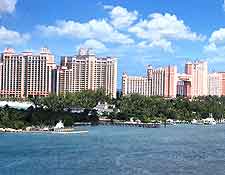
Just under three-quarters of all residents of the Bahamas now live within the island's capital and largest city, Nassau. New Providence, the island on which it sits, is also home to the Bahamas' biggest airport, namely the Lynden Pindling International Airport.
The city's bustling port and fascinating architecture are among the first sights most visitors to the Bahamas will see during their stay on this archipelago. The tempting Paradise Island and its sprawling Atlantis resort lie directly to the north-east of the New Providence island and therefore Nassau.
Spanish Settlement
Nassau's history has long revolved around its protective natural harbour, which not only successfully defended the area from potential attacks and invasions, but also protected the plentiful pirates, rum smugglers, freed slaves and numerous other people who sought refuge here throughout the centuries.
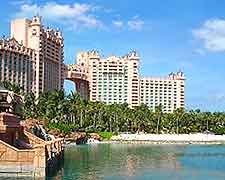
The Lucayans, the area's earliest known inhabitants, were quickly driven from the region after Christopher Columbus landed on the island he named San Salvador in 1492. The Spaniards, however, chose not to stay long in Nassau, being disappointed by the apparent lack of gold present on the island - not what they had expected.
Charles Town
In 1629, King Charles I claimed both the Bahamas and the Carolinas in the name of England. However, the Bahamas did not actually witness its earliest permanent English settlers until roughly two decades later, when experienced explorer William Sayles established a small and rather formal settlement on nearby Eleuthera Island. Nassau's history truly began when it was first founded as Charles Town in the year of 1666, before receiving its current name in 1695.
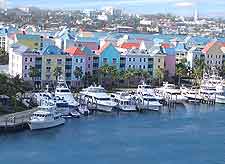
Privateer's Republic
Present-day Nassau's first visitors were far less pious people, who pillaged from numerous shipwrecks lining the newly established city's coast. An unofficial privateer's republic was established in the city after England issued a 'Letter of Marque' permitting privateers to attack any enemy vessels. The local magistrate was none other than famous pirate leader Blackbeard, just one of many pirates basing themselves in the city during the 17th century. After the wars ended between England and other countries, the privateers became outlaws and were eventually escorted off the Bahamas aboard warships.
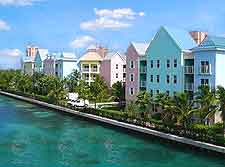
Loyalist and Slave Refuge
Following the American Revolution, Nassau became something of a refuge for several Loyalists, many of whom arrived here with their slaves in tow. When England made the trading of slaves illegal in 1807, the Royal Navy subsequently intercepted many slave ships, whose unwilling passengers unexpectedly gained their freedom. The freed slaves first settled within the city's Over-the-Hill neighbourhood, with the majority of Bahamas' residents originating from these West Africans.
Privateering and Prohibition
Nassau, along with the rest of the Bahamas, chose to make a stand against the Union blockade and continued trade with the Confederate states during the time of the American Civil War (1861 to 1865). The Bahamas once again defied American law by smuggling alcohol into southern ports during the infamous prohibition years.
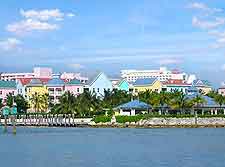
After King Edward VIII abdicated from his throne, he and his divorced American socialite wife, Wallis Simpson, chose to live here, heralding a new chapter in Nassau's history and the beginnings of a burgeoning tourism industry. Of note, the Bahamas became an independent nation as recently as 1973.
Nassau's fortune really took off with the rise of tourism, particularly package holidays for Americans visiting the Caribbean. The colossal development of Atlantis, a half-billion dollar themed hotel resort dreamed up by South African hotel tycoon Sol Kerzner (of Sun City fame), added considerably to the recent history of Nassau. Its location on Paradise Island, just north of the cruise ship quayside, has brought with it an air of undeniable sophistication to the capital of the Bahamas.
 Just under three-quarters of all residents of the Bahamas now live within the island's capital and largest city, Nassau. New Providence, the island on which it sits, is also home to the Bahamas' biggest airport, namely the Lynden Pindling International Airport.
Just under three-quarters of all residents of the Bahamas now live within the island's capital and largest city, Nassau. New Providence, the island on which it sits, is also home to the Bahamas' biggest airport, namely the Lynden Pindling International Airport. The Lucayans, the area's earliest known inhabitants, were quickly driven from the region after Christopher Columbus landed on the island he named San Salvador in 1492. The Spaniards, however, chose not to stay long in Nassau, being disappointed by the apparent lack of gold present on the island - not what they had expected.
The Lucayans, the area's earliest known inhabitants, were quickly driven from the region after Christopher Columbus landed on the island he named San Salvador in 1492. The Spaniards, however, chose not to stay long in Nassau, being disappointed by the apparent lack of gold present on the island - not what they had expected.

 After King Edward VIII abdicated from his throne, he and his divorced American socialite wife, Wallis Simpson, chose to live here, heralding a new chapter in Nassau's history and the beginnings of a burgeoning tourism industry. Of note, the Bahamas became an independent nation as recently as 1973.
After King Edward VIII abdicated from his throne, he and his divorced American socialite wife, Wallis Simpson, chose to live here, heralding a new chapter in Nassau's history and the beginnings of a burgeoning tourism industry. Of note, the Bahamas became an independent nation as recently as 1973.